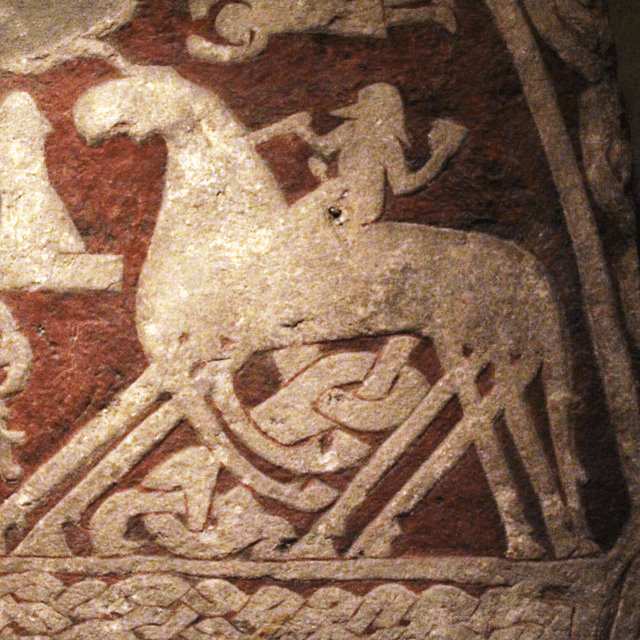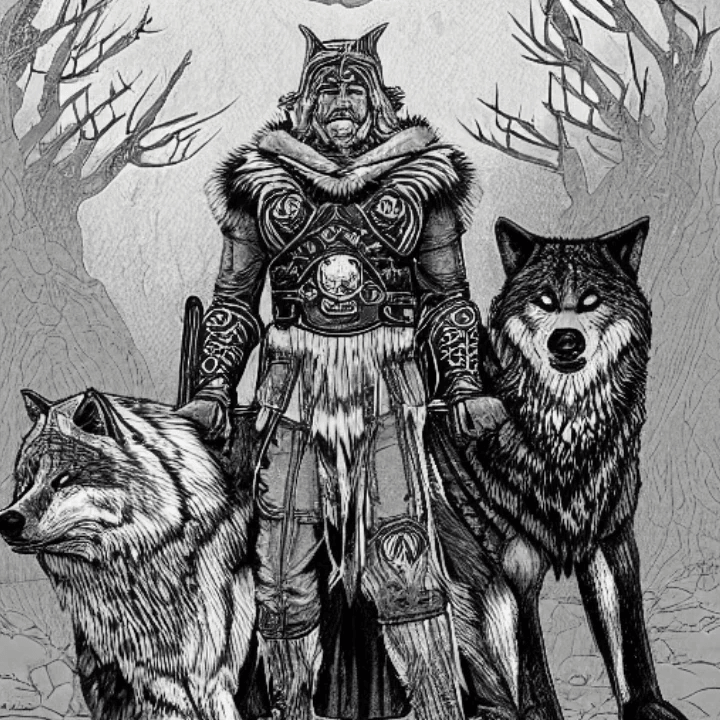Yggdrasil: Unveiling Mysteries of The Sacred World Tree
Norse mythology is a rich tapestry of ancient tales and legends, filled with gods, giants, and fantastical creatures. Among its many captivating elements, one of the most intriguing and iconic symbols is Yggdrasil, the mighty World Tree that connects the different realms of the cosmos. In this article, we embark on a journey to explore the depths of Norse mythology and uncover the significance of Yggdrasil.

Yggdrasil, also known as the Tree of Life, stands at the center of the Norse cosmos, serving as a conduit between the nine realms. Its immense branches extend across the heavens, and its roots delve deep into the great realms, tapping into legendary wells and streams for sustenance. This colossal ash tree serves as a cosmic axis, linking together the realms of gods, humans, giants, and various other beings.
Roots of Yggdrasil
Yggdrasil's roots draw power and sustenance from three different sources. The first root reaches up towards heavens and into Asgard, the realm of the gods, and taps into the well of Urd. Shielded by the root’s magic, by the well stands a beautiful hall that is home to three maidens – Urd, Verdandi, and Skuld – who shape the lives of men and are known as norns.
The second root extends to Jotunheim, the domain of the giants. Here, the root taps into the Mimir’s well, whose waters are coveted by many for containing boundless wisdom and which is guarded by its eternal guardian Mimir. Here, at Mimir’s well, Odin sacrificed his eye for a drink from the well to obtain supreme wisdom and solidify himself as the leader of the Aesir.
The third and final root travels to Niflheim, the icy realm of the dead. This root taps into the wellspring of Hvergelmir, a massive cauldron from which all rivers originate, symbolizing the primordial source of life and creation. This wellspring is a home to many snakes and serpents, with the great dragon Nidhoggr living among them.
Within the vast expanse of Yggdrasil, there exist nine interconnected realms. In addition to Asgard, Midgard, and Niflheim, the World Tree also links to realms such as Vanaheim (abode of the Vanir gods), Alfheim (dwelling of the light elves), Jotunheim (the land of giants), Svartalfheim (the domain of the dwarves), Muspelheim (the realm of fire) and Helheim (abode of the dead). Each realm has its own unique characteristics, inhabitants, and significance within Norse mythology.
Among the Branches of Yggdrasil
Asgard: Home of the Aesir Gods
Asgard, situated atop Yggdrasil's highest branches, is the realm inhabited by the Aesir gods. Ruled by the mighty Odin, Asgard is a place of divine splendor, where grand halls and palaces stand in golden brilliance. It is from Asgard that the gods oversee the mortal realm, engage in epic battles, and prepare for the final battle of Ragnarok.
Midgard: The Realm of Humans
Midgard, often referred to as Earth, is the realm of humankind. Suspended within Yggdrasil's middle branches, it is a world populated by mortals, their settlements, and their adventures. Midgard is constantly influenced by the gods and their actions, shaping the fate of both individuals and civilizations.
Jotunheim: The Land of Giants
Jotunheim, nestled within the roots of Yggdrasil, is a realm inhabited by the jotnar, or giants. These formidable beings range from mountainous brutes to cunning and deceptive creatures. Jotunheim serves as a land of challenges and conflicts, frequently intersecting with the affairs of gods and heroes.
Vanaheim: Abode of the Vanir Gods
Vanaheim is the realm of the Vanir gods, a pantheon associated with fertility, prosperity, and nature. Located within Yggdrasil's branches, Vanaheim is depicted as a lush and fertile land, where bountiful harvests and vibrant ecosystems flourish under the Vanir's watchful eye.
Alfheim: Dwelling of the Light Elves
Alfheim, situated above Midgard, is a realm inhabited by the ethereal and luminous light elves. Known for their beauty and connection to nature, the light elves possess great wisdom and magical abilities. Alfheim is often associated with light, joy, and enchantment.
Svartalfheim: Domain of the Dwarves
Svartalfheim, residing within the depths of Yggdrasil, is the realm of the industrious and skilled dwarves. Known for their craftsmanship and mining expertise, the dwarves forge powerful weapons, legendary artifacts, and intricate treasures. Svartalfheim is a realm of hidden caverns and wondrous craftsmanship.
Niflheim: The Frozen Underworld
Niflheim lies beneath the lowest roots of Yggdrasil, a cold and mist-shrouded realm associated with ice, frost, and darkness. It is home to Hel, the ruler of the dead, and the souls of evil men who passed into this ice realm after traversing Helheim.
Muspelheim: Realm of Fire
Opposite Niflheim, Muspelheim exists as a realm of searing flames and intense heat. Ruled by the fire giant Surtr, Muspelheim embodies the primal power of fire and is foretold to be instrumental in the apocalyptic event of Ragnarok.
Helheim: Abode of the Dead
Helheim is a realm of the dead, located beneath the roots of Yggdrasil. It is a somber and desolate place ruled by the goddess Hel, where souls who did not attain glory in battle or gain entrance to other afterlife realms reside. It represents the acceptance of mortality and the finality of death in Norse mythology.
Inhabitants of Yggdrasil
Yggdrasil is not only a physical entity but is also inhabited by various mythical creatures. Beneath its roots resides Nidhoggr, a colossal dragon who gnaws at the roots of the tree, representing decay and destruction. The eagle perched on Yggdrasil's highest branches looks down on Nidhoggr below, embodying knowledge and inaction. The squirrel Ratatoskr scurries up and down the tree, acting like a messenger between Nidhoggr and the unnamed eagle, fanning the flames of hate between them by spreading nasty rumors and ferrying insults that one has for another. These inhabitants further contribute to the vivid and complex tapestry of Norse mythology.

Symbolism of the World Tree
Yggdrasil is a profound symbol in Norse mythology, representing the interconnectedness of all things in the cosmos. It embodies the cyclical nature of life, death, and rebirth, underscoring the idea of continuous renewal and regeneration. As a world tree, it also symbolizes the axis mundi, a universal concept found in many mythologies, where the physical and spiritual realms meet.
The image of the tree resonates deeply with human existence, reflecting the innate human desire to seek meaning and connectivity. It reminds us of the intricate web of relationships that bind us to the natural world and the forces beyond our comprehension.
Yggdrasil, the World Tree of Norse mythology, is a powerful symbol that encapsulates the cosmos and its profound interconnections. It serves as a gateway to the realms of gods, giants, and the dead, and its roots tap into the wellsprings of cosmic wisdom and primal creation. As we delve into the mysteries of Norse mythology, we unravel the layers of symbolism embedded in this awe-inspiring ancient tree, reminding us of our place in the grand tapestry of existence.
So, let us gaze upon Yggdrasil, this towering arboreal monument that stands as a testament to the enduring power and enduring fascination of Norse mythology. May its endless branches forever inspire us to explore the depths of our own roots and seek wisdom in sacrifice.


